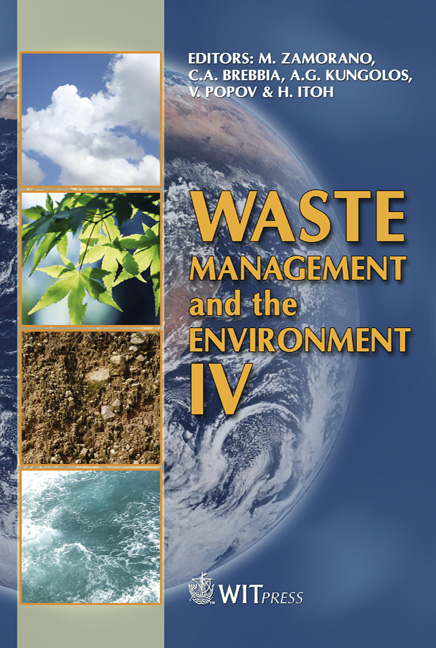Potentiometric Biosensor For Acrylamide Determination In Wastewater Using Wild Type Amidase From Pseudomonas Aeruginosa
Price
Free (open access)
Transaction
Volume
109
Pages
10
Page Range
789 - 798
Published
2008
Size
518 kb
Paper DOI
10.2495/WM080801
Copyright
WIT Press
Author(s)
N. A. F. Silva, D. Gil, A. Karmali & M. Matos
Abstract
Acrylamide is a toxic amide with potentially hazardous effects on the environment and human health. This paper reports the results regarding the development of a potentiometric biosensor in order to determine the amount of this amide in wastewater samples. The biosystem consisted of whole cells of Pseudomonas aeruginosa containing intracellular amidase activity which hydrolyses acrylamide producing ammonium ion and acrylic acid. The cells were immobilized on the surface of several types of membranes such as polyethersulfone, nitrocellulose and nylon, in the presence of glutaraldehyde as bifunctional reagent, and then attached to the surface of an ammonium ion selective electrode. Polyethersulfone was revealed to be the most adequate in terms of biosensor response. The effect of glutaraldehyde concentration was also studied and 5% (v/v) was chosen as the optimum concentration value. The results obtained revealed excellent analytical characteristics of the biosensor such as good linear response in the range of 0.5 to 100mM of acrylamide, a detection limit of 4.48 x 10-5M, a response time of 55 s, a sensitivity of 58.9mV/mM. This system was also tested in real samples of complex matrix, namely wastewater from an industrial plant where an average substrate recover of 93.3% was obtained. Keywords: acrylamide, potentiometric biosensor, wild-type amidase; whole cells, Pseudomonas aeruginosa, wastewater.
Keywords
acrylamide, potentiometric biosensor, wild-type amidase; whole cells, Pseudomonas aeruginosa, wastewater.





